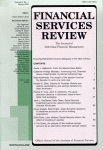An analysis of affinity programs
the case of real estate brokerage participation
DOI:
https://doi.org/10.1016/S1057-0810(99)00042-6Keywords:
Efficiency, Affinity programs, Real estate brokerageAbstract
In this study, we examine the impact of affinity programs on the residential real estate brokerage market. The results indicate that affinity-participating firms employ more salespeople, operate more offices, are more likely to be franchised, and have more multiple listings service affiliations than their nonparticipating counterparts. We directly test for firm and industry efficiency using a Bayesian stochastic frontier technique, and find strong evidence that non-affinity firms are much more efficient at allocating and utilizing their resources. These findings cast concerns on the industry in light of the growth of affinity programs. © 2000 Elsevier Science Inc. All rights reserved.
Downloads
Published
How to Cite
Issue
Section
License
Copyright (c) 1999 JAI Press Inc.

This work is licensed under a Creative Commons Attribution-NonCommercial 4.0 International License.
Author(s) retain copyright and grant the Journal right of first publication with the work simultaneously licensed under a Creative Commons Attribution-NonCommercial 4.0 International License that allows to share the work with an acknowledgment of the work's authorship and initial publication in this Journal.
This license allows the author to remix, tweak, and build upon the original work non-commercially. The new work(s) must be non-commercial and acknowledge the original work.


